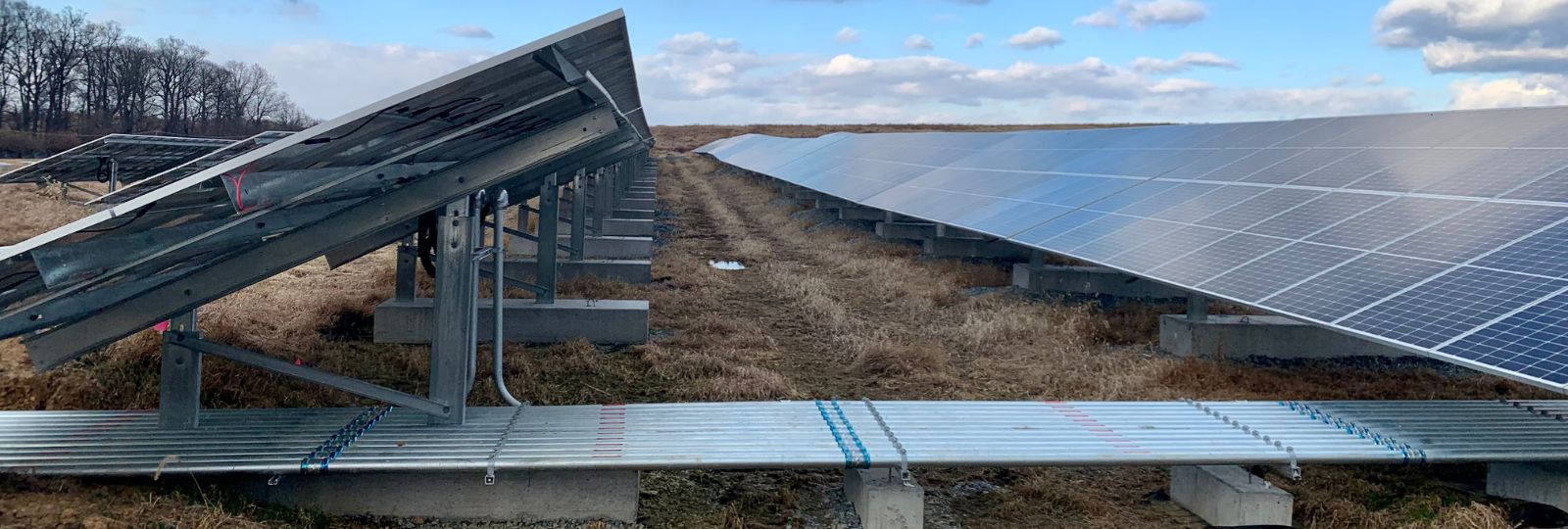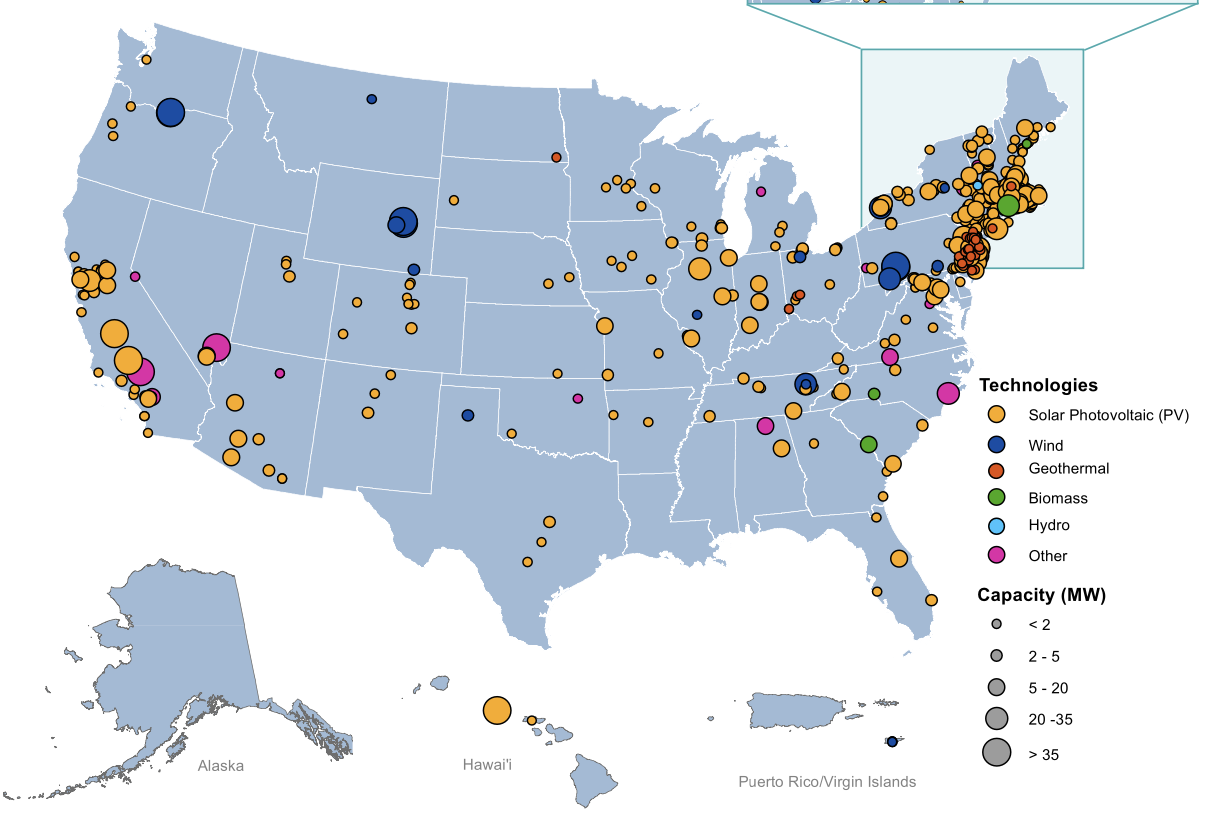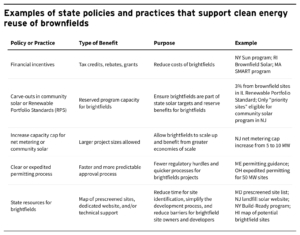
How State Policies and Practices Shape the Evolving Landscape for Clean Energy on Brownfields and Landfills
By Tansy Massey-Green and Matthew Popkin from RMI
The US boasts over 624 active brightfields – clean energy projects on brownfields and closed landfills. Most people would assume that these projects are predominantly built in sunny and windy states like California, Texas, and Florida. In reality, according to the US EPA, Massachusetts and New Jersey are the frontrunners with 140 and 119 brightfield projects respectively — and it’s not even close. New York is a distant third place with 63.
Our energy system has always required land: to mine, to drill, to dam, and to host power plants. Some smaller states with limited land for economic development, housing, parks, and energy had to innovative first. As a result, these states implemented a range of policies, incentives, and practices to prioritize siting clean energy projects on previously disturbed or contaminated land. This has helped enable new industries, create new jobs, and reactivate sites to power part of our ever-increasing appetite for energy.
Brightfields also offer financial benefits through site leases, tax revenue, and hedges against volatile fuel prices, as well as opportunities for local energy generation on underutilized sites that have fewer, if any, competing reuse plans. That said, brightfields are not without their complications. Compared to a traditional clean energy project, brightfield sites may be more complex, involve additional permits, face real and perceived liability risks due to past uses, and/or require design considerations that all can lengthen planning timelines and increase project costs.
How brightfields policies and practices shape markets
While recent federal incentives made brightfields more attractive, these projects are not a new concept. According to the US EPA, over 419 projects were built prior to 2022, with state policies and practices shaping state and regional markets. Such policies also help align energy siting with state and local land-use priorities. Massachusetts has one of the most strategic brightfield incentives in the country, and the policy has worked as intended — nearly every viable closed landfill is now a brightfield. The 2025 federal budget reconciliation bill phases out long-standing solar and wind energy tax credits in the next two years. This complicates deployment and financing, but the nation’s demand for energy is only growing. Scaling up brightfields development offers an opportunity to build our energy capacity, deliver financial benefits, reactivate underutilized, often contaminated sites, reinvest in communities, and reduce the siting of clean energy on undisturbed, green spaces.

Completed brightfields in the US by technology and size (Source: US EPA Repowering Matrix, 2024)
The brightfields potential in western states is largely untapped
The northeast and mid-Atlantic states are embracing the brightfields opportunity. The mid-west, particularly Illinois, Michigan, Minnesota, and Ohio, is starting to catch up. Yet these projects are not common in the western United States (with the exception of California). However, if every state in EPA Regions 9 and 10 built solar on just 10% of their brownfields, the regions could generate 23 gigawatts of clean energy, enough to power over 3.3 million homes, all while repurposing 2.4 million acres of already disturbed land. California and Hawaii are stepping up their brightfields focus. For example, as of October 2024, California boasts 41 completed brightfields – 11 of which are landfill solar projects. Here, the state established a landfill solar permitting process that follows CalRecycle’s Post Closure Land Use permitting process. Additionally, Hawaii created a map that overlaps government-owned brownfield sites in the state with solar and wind potential. On its brownfields redevelopment website, they note these sites are relatively low-risk brownfield properties for solar developers. These are productive starting points, but California, Hawaii, and other states can build on this foundation and learn from what leading states have done to incentivize brightfields.
States do not have to reinvent the wheel to advance brightfields
The chart below outlines examples of policies and practices implemented around the country that can support brightfields and reduce barriers to project development.
States nationwide are turning to renewable energy to achieve a wide range of objectives, from supporting data center build out and other economic investments to improving air quality. Even though federal incentives for solar and wind will be sunsetting after 2027, these priorities will continue. The good news is that states can learn from their peers who have already tried and tested a range of policies and practices. Not all policies or practices may make sense in every market, but states have an increasingly robust menu of options to consider. Ultimately, such strategies can shape where renewable energy projects are built and signal to developers and communities that brightfields will be supported and encouraged.
Rocky Mountain Institute (RMI) is an independent, non-partisan, non-profit organization advancing a prosperous, clean energy transition for all. RMI is partnered with the Center for Creative Land Recycling’s (CCLR) Technical Assistance to Brownfields program. To request technical assistance with a brightfield project, reach out to RMI at [email protected] or CCLR at [email protected].


